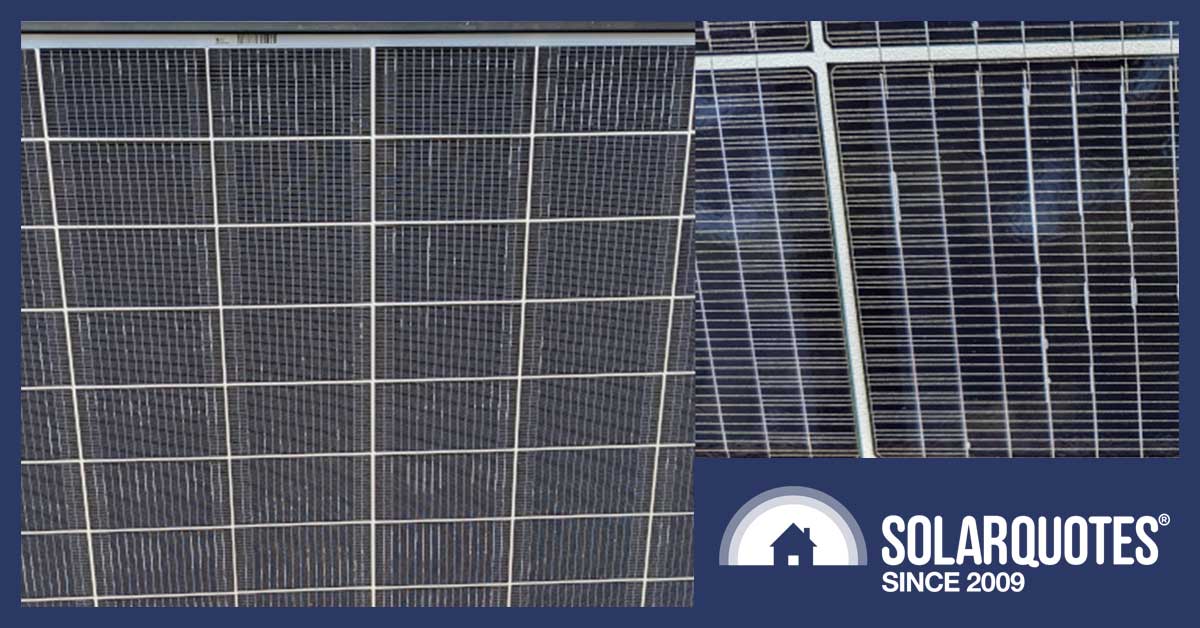
Recently we fielded a query from a Western Australian gent who was curious about a special extra detail he’d noticed in the premium products bought from a recommended installer.
Tom used SolarQuotes to arrange his solar system in Perth in July 2021 and chose to proceed with a quote from a REC Certified Solar Professional.
Tom selected the REC Alpha 370W panels for three reasons:
- the great temperature ratings to deal with the Perth heat,
- the 25-year warranty
- and because Tom’s Minister for Finance didn’t support a more expensive Sunpower panel preference
REC were voted ‘Best Solar Panels’ in our 2023 Installer’s Choice Awards.
Up On The Roof
Recently Tom got up to check the panels for the usual soiling and leaf litter when he noticed prominent white lines along the panel busbars under the glass.
All 29 REC Alpha panels had these lines. He contacted the installer, who contacted the distributor who raised a service request with REC.
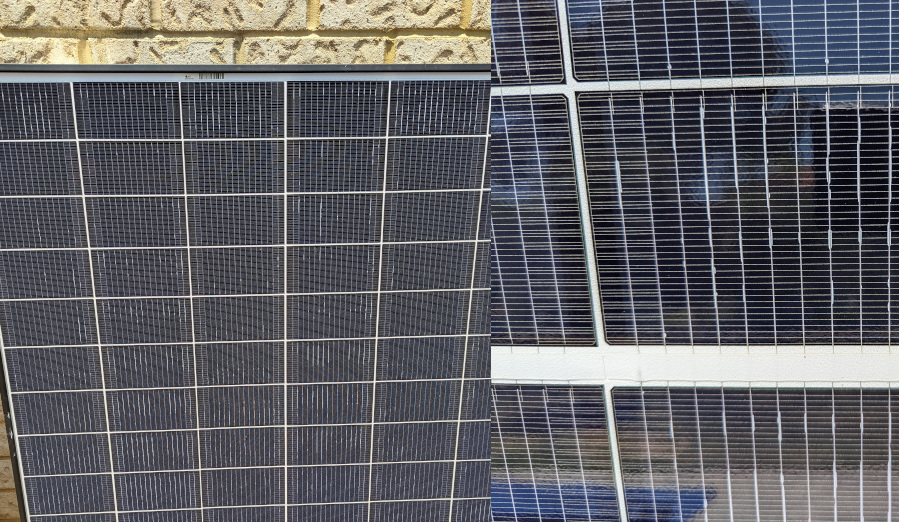
close ——————————————-> closer
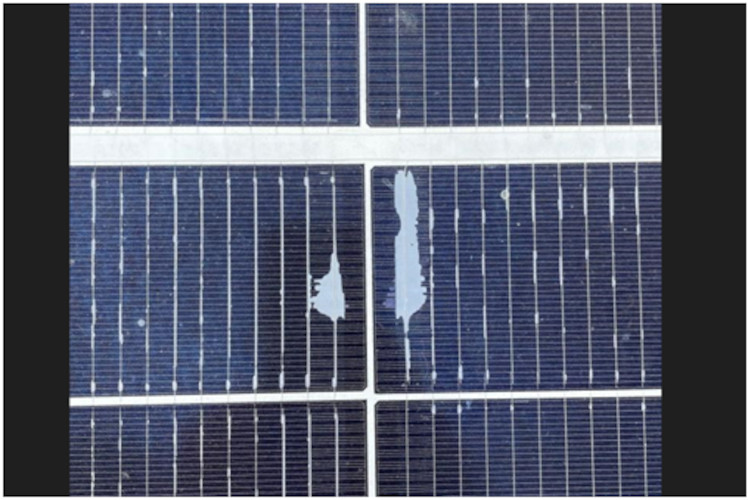
Closest: image supplied by REC.
Tom photographed these visual defects and sent the images off with a query to REC. This was the response:
Understanding the visual appearance of white line along the wire on
REC Alpha Series
Introduction
The REC Alpha Series uses an advanced cell connection technology where an innovative with thin wire combination connects the solar cells and finger metallization and eliminates the need for soldering on busbars. This cell stringing process is non-invasive and avoids the use of busbar to reduce optical shading within panel. Hence, overall product performance quality and durabilty are improved.
White line observed along wire on REC Alpha Series
The visual appearance of white line observed along wires is the difference in material thermal conductivity between the wire and foil. The limited thermal movement of the wire with the film creates white line appearance around the wire of certain cell and wire position when modules experience mechanical weathering. (Figure 1).
Module performance assessment confirms no impact to functionality
The foil coverage and wire solder profile are comparable on both areas with and without white line based on optical and scanning electron microscope (SEM) result. Hence, the white line visual appearance does not affect wire connection to cell finger nor affect the current flow when the panel is in operating mode. The EL image does not show dark area at the wire position that observed white line. This shows that current is flowing normally from the cell through the fingers and into the wire. This validates that the white line is a visual artifact that has no effect on module’s functionality.
Conclusion
The white line along wire is a visual artefact that is resulted from interaction between wire and foil from difference in material thermal conductivity and as such the extent of white line varies from module to module. Cross sectional optical and SEM inspections with tests have also shown that white line visual appearance has no effect on the power, performance or reliability of the module.
Tom said it was good to get confirmation from REC that the occurrence doesn’t represent a safety problem (like hotspots) or panel performance issue. Despite the responsive support from REC, Tom reached out to us more out of interest; he was wondering if we have heard of this occurrence or whether installers in the SolarQuotes network had provided feedback regarding these REC Alpha busbar white lines.
We haven’t seen any like it, though I haven’t checked Finn’s array of REC Alpha 405s on his house. Finn did send up his drone to look for any obvious defects on his 2.5-storey roof, and the 6-month-old panels had no obvious visual defects – apart from bird shit. Admittedly we don’t have an electron microscope or the smarts to operate one if we want to check them in detail.
None of the white marks on Tom’s panels are as pronounced as the photograph from REC. However, he’ll be chasing them for a replacement if the marks become this prominent. REC market their Alpha as a premium panel and they’re certainly priced as such. Having them side by side with 11 x 415W Trina Vertex S+ panels installed to expand his system, the Trinas look better than the REC Alpha panels.
Hopefully, this post is a reminder that whether they’re the cheapest or the most expensive, it’s worth having your panels looked over occasionally. In fact, if you read the fine print of your connection agreement, the network company probably mandates an electrical inspection at least every 5 years.
There’s a lament about the bitter taste of expensive products fading after the sweetness of cheap…. oh no, that’s not right, is it?
Let’s content ourselves with the excellent customer service and the REC assurance this issue raised by Tom is merely a cosmetic one. And we’ll keep a sharp eye on the monitoring for the next few years to ensure the yield stacks up.
If you’d like to track them yourself, you can follow the progress here, with all the other enthusiasts at PVOutput.org.
This is a good use for the Internet of Things: pushing data from your solar to an independent monitoring platform where you can record and compare output over time and with other systems locally and worldwide.

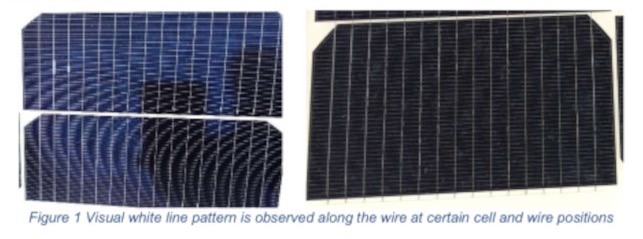
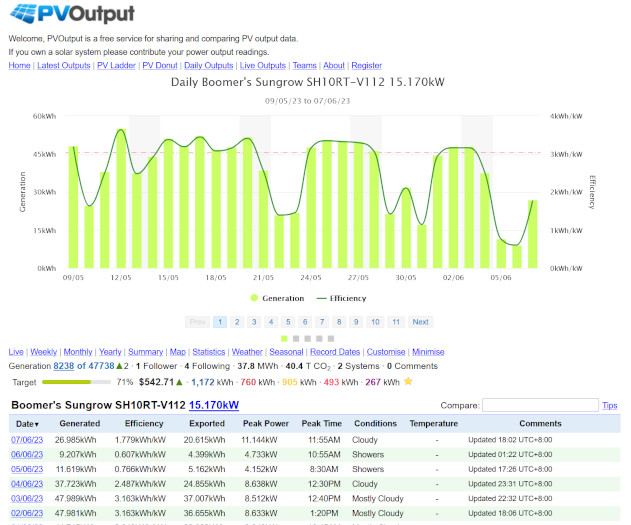
 RSS - Posts
RSS - Posts



Mmm…just got a quote for the Alpha Pure R which is all black. Should those with REC be concerned??
I wonder if this problem could affect the all black Alpha Pure and Pure-R? REC mentioned (from above article) “is resulted from interaction between wire and foil from difference in material thermal conductivity”.
Does the black panel have the same foil wire setup, albeit in black?
Great to see a write-up on this topic. I have been in conversation with REC about the exact same issue since November last year. I have 64 REC Alpha panels which are ALL suffering the same white blemish issue described herein. Given part of the REC Alpha attraction was the aesthetic, i am wondering at what point replacement will be a consideration.
It’s obviously not an isolated case then, considering you have blemishes on 64 panels.
Hopefully you get the outcome you are happy with.
How long have you had your panels?
I agree RE the aesthetic, that was my reason over the Sunpower Maxeon, not the price.
Just following up on this, I’ve been offered some panels that a homeowner requested replaced with this issue. Has there been any impact on production or on temperature?
As far as I’m aware this has just ben a cosmetic issue, albeit an interesting one.
I have bought these panels from different places for my off grid system. They were panels that had been replaced because of the white spots. Last 10 I bought was for $20 a piece. Don’t care what they look like, can’t beat that price. I’ve seem them produce over 200w just laying flat on the ground.